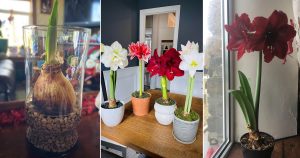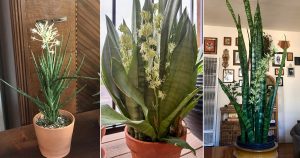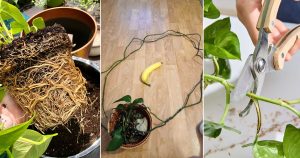I promised I would share all the good information I learned at my Master Gardener classes, and today I learned a whole bunch of great stuff. The class was an introduction to horticulture and was taught by a professor from a nearby college. The first tidbit I want to pass along is the answer to a common question I find in my email inbox.
The question gets asked all sorts of different ways, but here’s the gist of a it:
Hi Fern! I just bought the most delicious apple at my local farmers market. It was so tasty that I saved the seeds and I really want to grow my own apple tree, so that I can eat these tasty apples all the time. I Google searched and found your article about growing apples in containers, but I noticed you didn’t have any info on how to grow them from seed. What should I do? Any assistance would be great! Thanks in advance!
I already knew that growing fruit trees from seed was usually futile, but I didn’t know more than “most modern fruit trees need to grow on different rootstock to be healthy.” But now I know there’s more to it than just needing to borrow another tree’s roots. By the way, there is a lot of bogus info on the internet on this topic.
You should resist that bad advice, here’s why:
First–and quite frankly, foremost–fruit trees reproduce sexually. Yep, you read that right. They reproduce pretty much the same way we do. Well, not exactly the same, but they do have sperm (pollen) and an egg that is fertilized by that sperm. And just as human offspring resemble their parents, but are not exactly the same (thanks to DNA contributed by each parent), so to are the fruit trees that grow from seeds.
When you buy an apple tree marked ‘Gala’ at the nursery, or a ‘Bartlett’ pear, they are actually clones of the one and only original ‘Gala’ or ‘Bartlett.’ To explain things simply, the person who bred the original plant realized it was a great tree, took cuttings, and then grafted them onto a different tree’s roots to make more of their great discovery. The breeder then sold those grafted saplings to nurserymen who then sold it directly to you (or to a garden center who then sold it to you).
Second, even though there are some types of fruit trees that will consistently produce similar offspring though, such as oranges, most fruit trees grown from seed would take over a decade to mature to the point where they can produce fruit. Oranges can take up to 15 years to become fruit-bearing trees. Who wants to wait that long? Even nurseries don’t wait that long. When you take a cutting from a mature tree and graft it onto rootstock, it is ready to bear fruit in a few years, not 15! Trees at the nursery are usually a year or two old. You’ll probably begin seeing fruit on it within a season or two after planting.
Third, and finally, my original point about rootstock. Plant breeders don’t breed for healthy roots, because they know that they’ll be grafting their creation onto a different rootstock. To go back to the example of oranges, they are almost always grafted onto sour orange root stock, which is much more disease resistant. Grafting also allows breeders to mix and match trees to rootstocks to create attributes they want, like dwarfism, disease resistance, cold/heat hardiness, etc.
If you were somehow lucky enough to sprout from seed a tree extremely similar to the parent you tasted, and you were willing to wait 15 years for the plant to mature, you still wouldn’t be able to overcome the fact that the roots that produced the fruit you tasted are not the roots your seedling will have.
So please, by all means grow apples in a pot on your balcony. I know from personal experience that oranges and peaches can also do really well in containers. But buy your tree from the nursery, don’t waste your time and energy on saving and growing fruit seeds.







